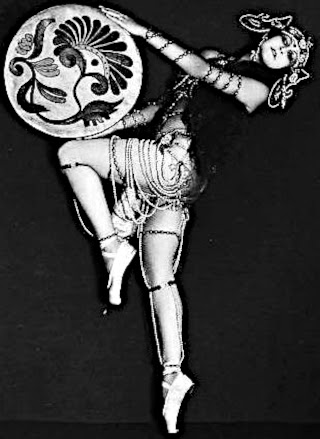These are two different interviews on two related topics: the place of specie in the reconstitution of national currencies in facilitating the recovery from a financial crisis.
I have to confess that there were some historical observations made by Lee Quaintance that made me scratch my head, wondering if we were coexisting in the same or parallel universes. I have tried to note them as they occurred in the text. What was most puzzling is that they seemed to be inserted in a line of thinking with which I was in completely agreement. Perhaps I just need another cup of coffee.
But in sum I found both interviews innovative and thought provoking. The concept of using Gresham's Law to induce people to save is interesting. I think the valuation model which my friend Hugo puts forward for a silver coin needs some work and some further thought, most likely on my part.
The status quo of economists and financial engineers, with their attendants politicians, will just hate these ideas. So I would not expect them to gain much traction, until things get substantially worse than they are today.
Hugo Salinas-Price on the Silver Peso and Deflation: Should the Fed be Buying Gold?
Chris Whalen, Institutional Risk AnalystJuly 19, 2010
"The difficulty lies, not in the new ideas, but in escaping from the old ones."
John Maynard Keynes
(1883-1946)
In this issue of The Institutional Risk Analyst, we shift focus from the U.S. to Mexico and feature a comment by Hugo Salinas-Price on his proposal for a silver-peso coin. We saw such a big response to the conversation with Jim Rickards about a gold-backed euro
("Paper Gold vs the Dollar? Interview with James Rickards," July 7, 2010) that we wanted to come back to the subject by speaking with an old friend from one of our favorite countries.
Salinas is founder, former chief executive officer, and honorary president of Grupo Elektra, the Mexican retailing company. He is also founder of the Mexican Civic Association Pro Silver, which for 10 years has been advocating the introduction of a monetized silver coin in parallel circulation with fiat pesos in Mexico. Legislation to that effect now is under serious consideration before the Mexican Congress.
Salinas describes the Mexican peso as a "derivative" of the dollar, a troubling prospect since, as we discuss below,
the dollar itself is a derivative of nothing, at best a mere representation of a unit of work. But before we go to our feature, we need to comment on the latest minutes from the FOMC and the growing indication that the U.S. economy is continuing to slow.
To us, there is no "double dip" in the economy. We never recovered from the first decline in aggregate demand. Forget the bogus inflation and GDP statistics coming from Washington. Talk to your neighbors and family, the people in the community who own businesses. Ask them how their revenues for 1H 2010 are doing YOY...
In response to mounting concerns about deflation, news reports are filled with speculation that the Federal Reserve System will "ease" monetary policy further, an interesting idea given that interest rates already are at zero. The concept of further quantitative easing, as we understand it, would be
for the Fed to purchase more securities from the Wall Street banks and hope -- repeat hope -- that a few pennies trickle down to the real economy. But mindful of the quotation from Lord Keynes above, maybe there is a better idea.
Last week The IRA spoke to Lee Quaintance, co-founder of QB Asset Management. Lee had worked in high yield credit and government bonds for several decades for the likes of Goldman Sachs (GS), CSFB and DLJ. Lee and his partner Paul Brodsky write a fascinating monthly market comment.
The IRA: So Lee, we see deflation as far as the eye can see but also rising costs. What's your view of the inflation/deflation debate amongst the chattering classes?
Quaintance: Credit inflations create asset bubbles that destroy the organic equilibrium mix between the factors of production. The deflation process curtails production and shrinks overall wealth but, ironically enough, redistributes a vast portion of the wealth that's left to the privileged few, mostly banks and government.
The IRA: We have created quite a mess.
Quaintance: A mess, yes, but, a predictable one nonetheless. Inflation and deflation are two sides of the same coin.
Fiat currency and unreserved lending privileges are the root causes of all these imbalances. Throw in a bit of greed and malice too no doubt. The Austrians modeled it and predicted it. The Keynesians make excuses for it.
The IRA: Years ago, we made our friend Bill Janeway angry at us for calling Keynesian economics a coward's road to socialism (See "New Hope for Financial Economics: Interview with Bill Janeway," November 17, 2008). Now that we are at that endpoint, our political leaders are completely clueless. We have yet to find a single American politician able to talk about the role of the dollar in the global economy.
Quaintance: Have you asked yourself why most people have come to believe that deflation is to be avoided at all costs? It's painfully obvious to us -- because it destroys the banks and handcuffs the politicians. For everyone else, it's seemingly a zero sum game. Why all the fuss?
(A zero sum game? Perhaps it has something to do with mass unemployment, and the transfers of wealth from the many to the few, the banks and the government, which Quaintance noted previously, leading to the decimation of the middle class, and a nation of hobos and millionaires. If all deflation did was destroy banks and harm politicians I would think it would be the most popular thing since the pre-elected version of Obama - Jesse)
The IRA: Well, if the U.S. economy continues to decelerate and deflate, we are going to see a lot of politicians facing mandatory "retirement" a la Harrison Ford in the film Blade Runner. A large portion of the U.S. population thinks that we are entitled to full employment, price stability and early retirement even as the government expands the deficit and currency at a double digit rates. The Chartalists think that we should just print money and use it to monetize all existing debt. The neo-Chartelist framework comes from the same intellectual wellspring as Keynesian economics and has been extended by the likes of Nobel laureate Bob Mundell. The current policy of the Obama Administration to borrow trillions of dollars to fund future deficits is similar madness, in our view, but is Fed-induced inflation better? What do you propose?
Quaintance: We have some basic views on what should be done and it comes in two steps. First,
there needs to be a coordinated global currency devaluation. We argue for the Fed to tender for private gold holdings at something like $5,000 per ounce and to maintain that bid/offer. This would be the true economic/regulatory function of a central bank and/or monetary authority.
The IRA: The U.S. central bank has not had any gold holdings since FDR's expropriation of the private banking industry's gold in the 1930s. All of the gold in the Fed's vaults belongs to somebody else. We have a reserve bank with no reserves. So you would have the Fed buy gold rather than purchase more crap assets from the large dealer banks via a second round of quantitative easing (QE II)?
Quaintance: Precisely. The second step would be
a major policy-mandated contraction in unreserved bank lending. These two simple steps would not only rebalance the financial books globally but would prevent leverage from over-inflating asset prices going forward, in turn creating another non-sustainable bubble economy. This isn't just theory. Let's look back. Employment trends in developed economies are being strangled presently by prior asset price inflation. As an admittedly crude example, the cost of shops on Main Street are overvalued and require artificially high rents to service debts. The average would-be shop owner can choose to pay his inflated lease or choose to pay workers - but not both. So,
asset price inflation due to excessive unreserved credit expansion is not wealth enhancing but, rather, productivity destroying.
(As a counterpoint though, it was not asset price inflation that started the process of breaking labor through offshoring and anti-union activity, a trend with its roots in the Reagan presidency, but general greed and lower tax rates on the monied interests. Why pay wages when you can pay yourself bonuses and tax free dividends to yourself and your friends? Capitalism has a natural dynamic to self-destruction, despite the mythology spun by the efficient market hypothesis folks. Given free rein, it will destroy itself by destorying its customers - Jesse)
The IRA: That is a structural problem. How does the Fed buying gold help?
Quaintance: You want organic employment growth? Lower the relative price of other factors of production.
Boosting asset prices unilaterally while wage rates remain relatively stagnant is a recipe for unemployment. This is just common sense and it's what we're seeing today. The system yearns for more money, not more credit.
The IRA: Yes, their operating costs are rising but selling prices are compressed, just like our favorite Italian food dispensary in New York. As we have long argued with our friend Bill Greider, consumers and small businesses who do not do business with JPMorgan and Goldman Sachs are the big losers in the fiat system. You must be smart enough to surf the waves of inflation, not just swim with the tide, and that makes us all speculators.
(It is really the arbitrariness of the money that is a root cause, and the creation of a monopolization of credit under an incompetent/corrupt Federal Reserve - Jesse)
Quaintance: Agreed. In the end, credit inflation historically leads to asset inflation while base money inflation leads to wage and basic goods/consumables inflation. No matter how you slice it,
the ratio of outstanding global debts to global base money is irreconcilable. This is a mathematical tautology. From this imbalance flow many of the imbalances you cite, in my mind. Chris, as I said,
we think this is as simple a problem as too little "money" in existence attempting to service and ultimately reconcile too much debt.
The IRA: So where do we go from here?
Quaintance: When the ratio of productive asset prices exceeds a theoretical limit vis-à-vis the other factors of production, the productive process breaks down. In the case of the U.S., it headed to developing economies overseas where labor demographics, regulatory apparatuses and asset pricing environments were far more in balance. This trend should continue until there is a serious reconciliation of that debt-to-base money gap.
The IRA: The one-sided era of free trade, with the U.S. open to all other nations but without reciprocity, has been like Smoot-Hawley in reverse, draining resources from the U.S. economy instead of what happened once WW II began. America ended up with much of the gold reserves and industry in the world but now we have swung to the other extreme. But most people don't realize that technological changes such as the electrification of the U.S. and resulting overcapacity in the 1920s drove the deflation of the 1930s,
(What! How about the huge waves of bank failures? There is nothing like vaporizing a class of person's life savings to provoke deflation. How can someone make such a sweeping statement and ignore the most prominent feature of the time from an economic perspective! - Jesse) not the marginal increase in tariffs. Tariffs were already high and had been for 50 years. So Lee what we hear you saying is that we need another global reflation a la FDR's purchases of gold?
Quaintance: Yes. I abhor as much as the next guy proactive public sector administration of anything that a free market can manage better.
But given the massive unreserved credit inflation of the last 20-plus years, a major -- and I mean major -- expansion of the global stock of base money must be administered ASAP to avoid further nominal private credit deflation and subsequent real economic contraction. Simply replacing vaporizing private debts with public debts is a mug's game -- a poorly-veiled requirement to inflate tomorrow. Why dance around the obvious here?
The IRA: So in a nutshell...
Quaintance: It's all about excessive unreserved credit having created real economic distortions that can't be reconciled through further debt creation. For a true financial reconciliation to occur
the debt-to-monetary base ratio has to narrow significantly, and to set a sustainable course the growth rate of global money should be capped in a credible fashion. The easiest way to do this is by reinstituting and maintaining a true gold standard, at least for base money. This is not a radical notion. Remember the reason the gold standard "failed" historically was not the basic mechanics of hard money being "too restrictive". The problem has always been unreserved leverage that accompanies "gold standards" creating non-sustainable economic imbalances. There is plenty of gold, at the right price, to reserve all money and credit.
The IRA: The new $5,000 per ounce price for gold in greenbacks suggests a huge degree of suppressed inflation in the dollar system.
Quaintance: We see no other way to re-ignite the real economy and put it on a sustainable path. Policy makers are holding a burning match. They have to act or the markets and global trade partners will act for them.
The IRA: Thanks Lee.
And now to our feature.
We have long believed that the U.S. government should issue silver and gold coins that are valued by weight. Most people are sophisticated enough to go down to their bank branch, look in the newspaper or online to ascertain the current value of silver or gold. By allowing the metal coins to trade on their intrinsic value instead of the arbitrary, political value assigned by the state, it would provide a way for average Americans to save and protect themselves from inflation. Hugo Salinas Price talks about how just such a system soon may be implemented in Mexico.
The Monetization of the "LIBERTAD" Silver Ounce in Mexico
By Hugo Salinas-Pricewww.plata.com.mx
The correct diagnosis of the world's economic sickness is: there has been too much spending based on too much debt and there is a starvation of real savings.
What would be the treatment for the illness?
Flush out the excessive debt accumulated by excessive spending with a laxative which will cancel that debt, and provide the patient with some healthy real money which he will greedily gobble up.
This is the philosophy which has led me to propose the reintroduction of silver money into renewed use in Mexico. I leave the cancellation of debt to others; my contribution is real, healthy money for the Mexican nation.
How to reintroduce silver into permanent use as money in Mexico?
First, since I do not wish to kill the patient, I prescribe
a gradual introduction of silver into circulation, in parallel with fake money, which is the only kind of money in the world today. We shall gradually increase the amount of silver money in circulation in Mexico, as it circulates along with fake, fiat money.
It is necessary to take into account that although at one time - about a hundred years ago, in the case of Mexico - people calculated value in terms of weight of silver, today they would not be able to do so. People have become accustomed to using numbers to designate value.
Thus, if we want silver to circulate in the hands of the Mexican people, we must devise a silver coin to which is attributed a number. If the silver coin has a number officially attributed to it, the Mexican people will snap up all the coins they can afford to purchase, because they know they will be able to use the coin in commercial transactions at any moment - though we know they will not do so:
they will instinctively save these coins (Gresham's Law). And that is what we want the patient to do!There were silver coins circulating in many parts of the world, just after World War II. They had all disappeared from circulation a few years later. What happened? There was inflation of paper money all over the world, due to credit expansion. This inflation caused the price of silver to rise. Since all the silver coinage in circulation had engraved numbers signifying monetary value, and the engravings could not be erased, the silver coinage became more valuable if it was melted down into silver bullion. That sealed the fate of the silver coinage: it was all melted down and never came back. In fact,
silver coins with engraved value can never come back as long as there is paper money in circulation - they will all suffer the same fate, they will all be melted down eventually, no matter what value is engraved, because paper or digital money leads to constant inflation.
You have Silver Eagle one-ounce bullion coins in the US, but they are purposely demonetized by having an engraved value of $1 Dollar; this makes them useless as ready money.
So the silver coin which is to be introduced into permanent circulation must have no engraved value. Providentially, there is such a coin in existence in Mexico: the "Libertad" pure silver ounce. We don't have to invent a new coin.
All we have to do is to obtain Legislation which will attribute a monetary value to this coin by means of a quote from the monetary authority, the Bank of Mexico. The quote will simply take the place of the engraved value.
It so happens that a former President of Mexico, Jose Lopez Portillo (1976-1982), tried to do just this, in a moment of inspiration, back in 1979. However, his legislation was defective and the measure was a failure because that legislation decreed that the Bank of Mexico should issue a monetary quote for the silver ounce, to depend directly on the international price of silver. The intention was excellent, but the legislation deficient, because the silver ounce bounced about in monetary value from day to day and no one could use it as money under those conditions. The law was allowed to lapse in 1981, but never repealed.
It took me many months of thought to find the solution to the monetization of the silver ounce, with no engraved value, but one day it came to me, right out of the blue:
the Bank of Mexico must issue a quote which will give the Libertad a monetary value, but once given a monetary value, that value must not be reduced, under any circumstances! The central bank must stand ready to make an infinite market at the minimum quoted value.
(I can see some a large hedge funds having fun with this one, testing the resolve of the Bank of Mexico. It probably needs more thought, as it is an absolutely pivotal point, and one on which the idea foundered before. I thought Hugo's idea of gold / silver for regulating international trade was brilliant, but I need to think more of how this one might survive the inevitable attacks of an unreformed financial system, capable of perverting almost anything it touches. - Jesse)
People will gladly receive a silver coin for savings, if it has a monetary value ascribed to it by a quote. But the quote must be stable, it must not be reduced - no one can accept as money, a coin whose monetary value may be less tomorrow that it is today. If we compare with paper money, a paper bill is acceptable because it says $100 pesos, and will always say $100 pesos. Its purchasing power may decline, but the bill will always say $100 pesos.
The same principle applies to a silver one ounce coin with no engraved value: if the quote is $300 pesos, the public must have the certainty that the quote will not be reduced. A fluctuating quote is what caused the failure of our former President's legislation: the coin had different monetary values from day to day, some days worth more, some days worth less.
On the other hand, people will joyfully accept a silver coin whose quote may be increased due to the increasing value of silver. In fact, this is an extremely powerful incentive to savings, and that is what we are looking for: more savings!
No interest payment is necessary to entice people into saving this coin - silver is an irresistible magnet for savings.
(The US is using it on a much smaller scale through the issuance of common coins with a marketing appeal, like the states and presidents series - Jesse)
So our proposed legislation is this:
The Bank of Mexico shall publish a monetary quote for the silver ounce, based on this procedure:
a. To the international price of silver in pesos, Bank of Mexico shall add a 10% seigniorage (profit) for itself. ($231.41 pesos X 1.1 = $254.55 pesos. Today's values of silver and pesos, at kitco.com)
b. The Bank of Mexico shall add to this, the cost of minting the silver ounce. ($254.55 + $19.02 estimate = $273.57 pesos)
c. The Bank of Mexico shall round out the sum of the two foregoing, to the nearest multiple of 5, to make the monetary value easy to remember. ($273.57 rounded out = $275 pesos quoted monetary value of the "Libertad" silver ounce)
d. When the international price of silver in pesos falls, the Bank of Mexico shall do nothing.
e. When the international price of silver in pesos rises and impinges upon the seigniorage of the Bank of Mexico, it shall increase the quoted monetary value to restore its seigniorage.
f. The Bank of Mexico shall mint sufficient quantity of Libertad ounces to satisfy market demand and prevent the appearance of a premium over the quoted monetary value of the Libertad.
By this means, the people of Mexico will have an ideal vehicle for savings and even those who cannot read or write will accumulate these coins as a family patrimony. A recent Mexican Treasury study discovered that
85% of all Mexicans do not have bank accounts. These are the candidates for savings in silver!
Under this legislation, the silver Libertad will never be melted down into bullion, as its predecessors. The coin will always be worth more as money, than as bullion.
A fall in the value of silver will not affect this coin. No matter how severe a collapse in the price of silver, this coin will always be preferable to any paper bill or digital money, because the paper bill and digital money have absolutely nothing to back them up, whereas this coin will always have some value due to its being silver. I find such a collapse hard to conceive, but one must take into account this possibility.
I cannot help adding that I believe that this silver money is what the whole world is waiting for, "waiting for the sunrise" out of our present deathly darkness. I believe that if it becomes a reality, it will be an enormous success.





















































